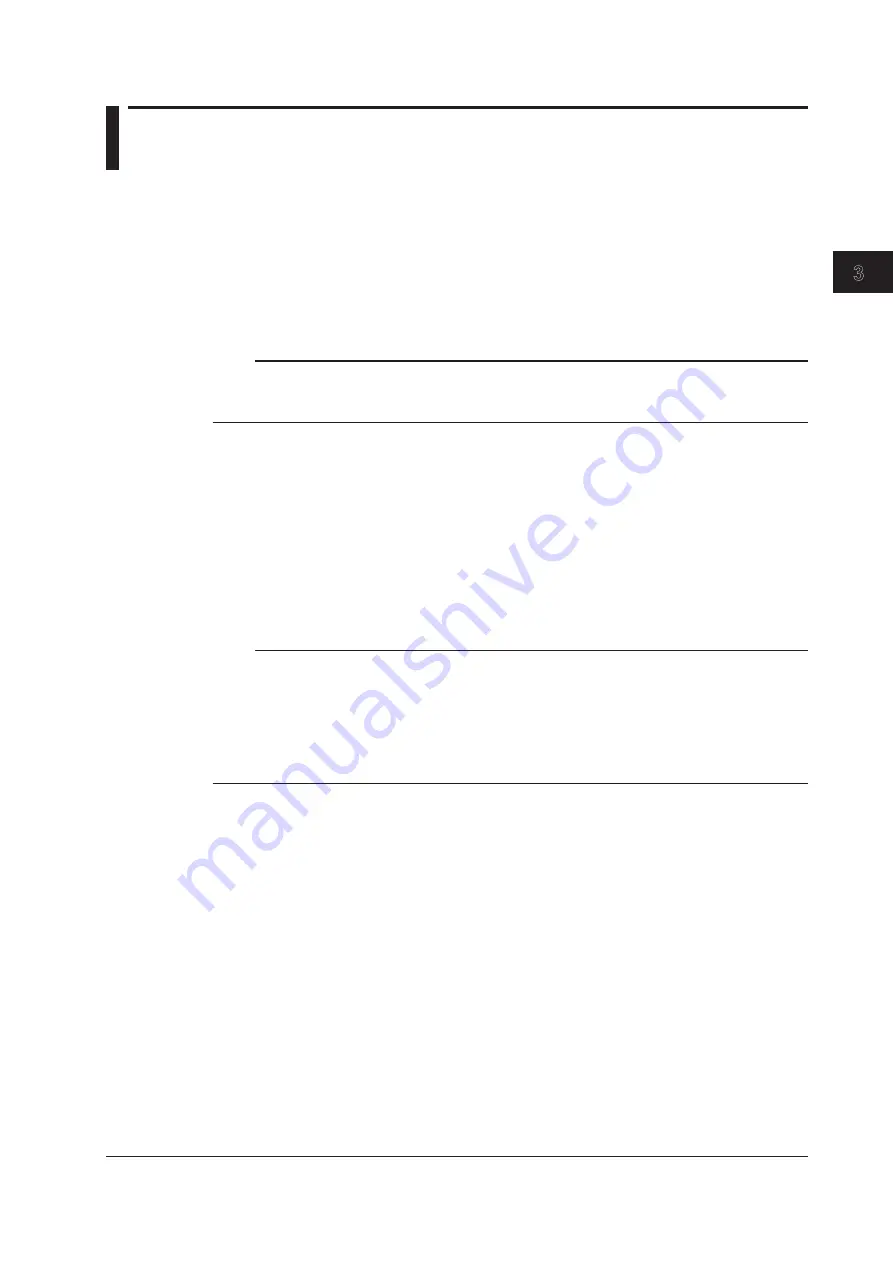
Common Operations
3-11
IM DLM3054-03EN
1
2
3
4
5
6
App
Index
3.4 Using USB Keyboards and Mouse Devices
Connecting a USB Keyboard
You can connect a USB keyboard and use it to enter file names, comments, and other items.
Compatible Keyboards
You can use the following keyboards that conform to USB Human Interface Devices (HID) Class Ver. 1.1.
• When the USB keyboard language is English: : 104 keyboards
• When the USB keyboard language is Japanese: : 109 keyboards
Note
• Do not connect incompatible keyboards.
• The operation of USB keyboards that have USB hubs or mouse connectors is not guaranteed.
• For USB keyboards that have been tested for compatibility, contact your nearest YOKOGAWA dealer.
USB Ports for Peripherals
Connect a USB keyboard to the USB port for peripherals on the front panel or rear panel.
Connection Procedure
Connect the type A connector of the USB keyboard to the instrument. You can connect or remove the
USB cable regardless of whether the instrument is on or off (hot-plugging is supported). When the
power switch is turned on, the keyboard is detected and enabled approximately 6 seconds after it is
connected.
Note
• Only connect a compatible USB keyboard, mouse, printer, or storage device to the USB port for
peripherals.
• Do not connect multiple keyboards. You can connect one keyboard, one mouse, and one printer.
• Do not connect and disconnect multiple USB devices repetitively. Wait for at least 10 seconds after you
connect or remove one USB device before you connect or remove another USB device.
• Do not remove USB cables during the time from when this instrument is turned on until key operation
becomes available (approximately 20 seconds).
Entering File Names, Comments, and Other Items
When a keyboard is displayed on the screen, you can enter file names, comments, and other items
using the USB keyboard.






























